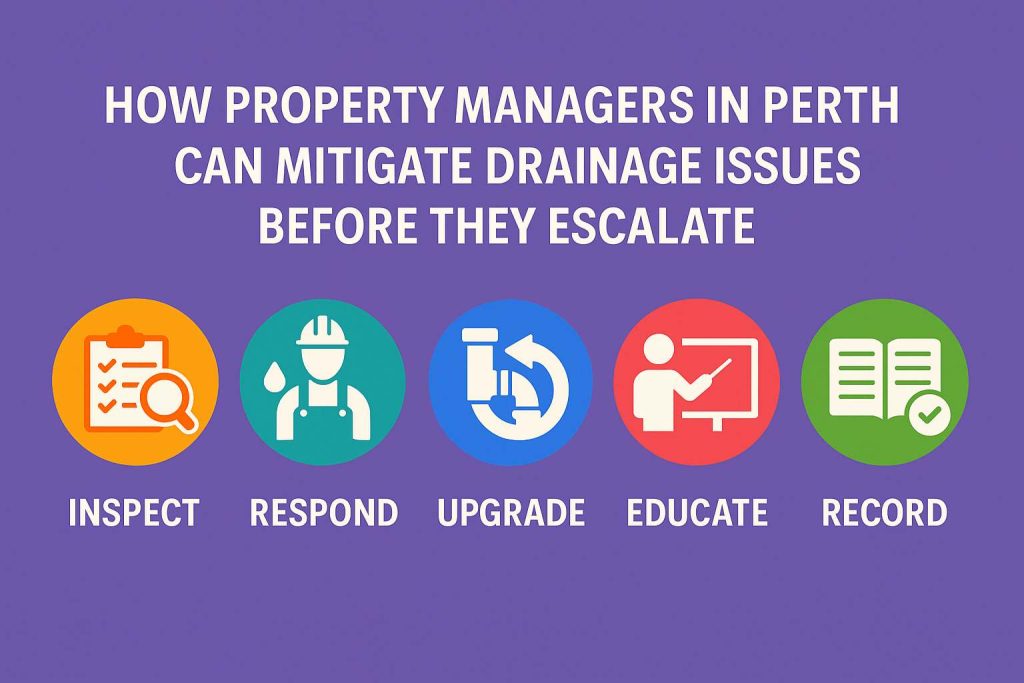Effective drainage management is a key responsibility for property managers in Ascot. Blocked or poorly maintained drainage systems not only disrupt tenants but also increase repair costs, legal risks, and insurance claims. Proactive strategies and partnerships with reliable plumbing specialists can help prevent minor drainage problems from becoming major liabilities.
Why Drainage Maintenance Matters for Ascot Properties
Ascot’s mix of older and newer buildings, seasonal heavy rainfall, and the presence of mature trees make local drainage systems vulnerable to blockages and pipe damage. Common risks include:
- Build-up of silt, leaves & debris in stormwater systems
- Tree root intrusion into underground pipes
- Poorly designed or ageing drainage infrastructure
- Misuse of internal drains by tenants
If neglected, these issues lead to flooding, water damage, pest attraction, and possible health hazards.
Step 1: Implement Scheduled Drain Inspections
Regular inspections are the foundation of drainage risk management. Property managers should develop an annual maintenance schedule that includes:
- CCTV drain inspections to locate hidden blockages or cracks
- Condition reports to prioritise repairs
- Immediate action plans for areas at high risk of recurring blockages
Engaging a specialist for drain cleaning Ascot, ensures that built-up debris is cleared before it causes flow restrictions.
Step 2: Engage Qualified Blockage Response Contractors
Unexpected drain blockages still occur despite preventive measures. Every property manager should have an established relationship with a licensed block drain plumber Ascot. These professionals offer rapid response services using high-pressure jetting, root cutting & pipe relining when necessary — minimising tenant disruption and expensive excavation.
Step 3: Upgrade Problematic Drainage Systems
Where inspections reveal repeated issues, long-term savings often come from upgrades rather than repeated repairs. Options include:
- Installing root barriers or replacing damaged pipes with root-resistant materials
- Redesigning external drainage to improve stormwater runoff flow
- Adding sediment traps to car parks and common outdoor areas
- Ensuring compliance with WA plumbing codes and local council stormwater regulations

Step 4: Educate Tenants on Proper Drain Usage
Many blockages result from tenant misuse — such as flushing wipes, grease, or foreign objects. Clear communication is critical. Provide tenants with easy-to-follow drain care guidelines covering:
- What can & cannot be flushed or disposed of in drains
- Signs of early blockages (slow draining water, gurgling sounds)
- How to report drainage concerns promptly
Step 5: Maintain Detailed Maintenance Records
Detailed records help property managers track recurring issues, verify warranty claims, and demonstrate diligence if disputes arise. Well-kept logs should include:
- Inspection dates & findings
- Completed maintenance work
- Recommendations for future upgrades
- Emergency plumber call-outs and resolution times
Conclusion
Drainage failures can escalate rapidly if left unchecked. By combining routine inspections, strategic partnerships with local plumbers in drain cleaning, fast access to a trusted block drain plumber in Ascot, and tenant education, property managers can safeguard their assets, meet legal obligations, and protect tenant wellbeing.
Property managers who act before problems arise not only reduce operating costs but also build a reputation for reliability — a vital factor in Perth’s competitive property market.